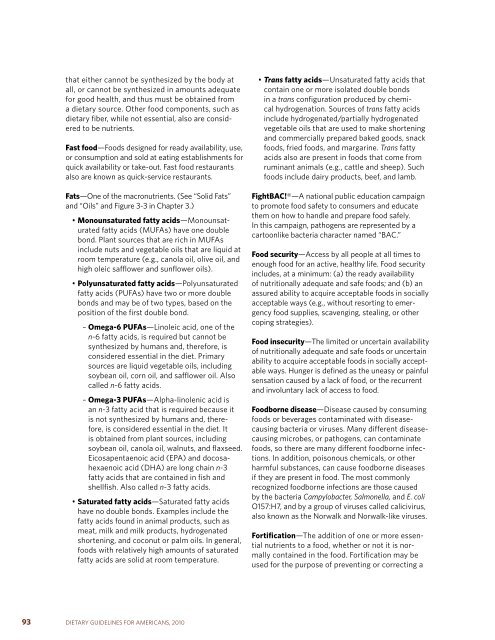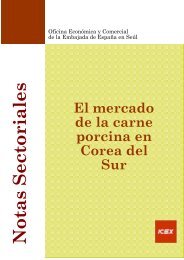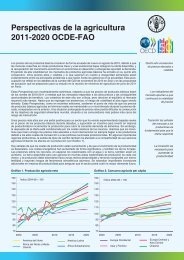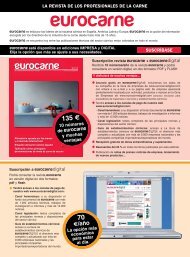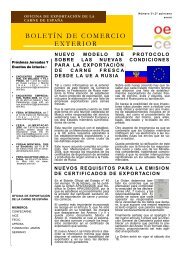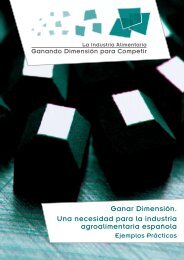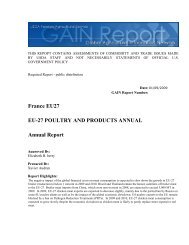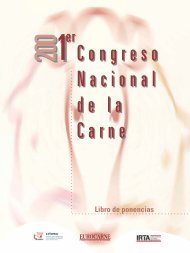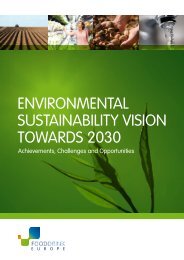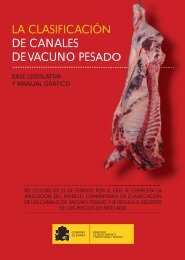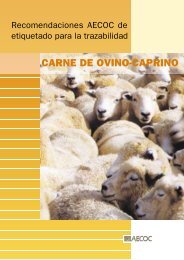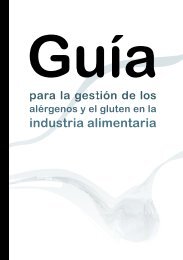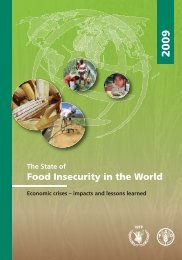Dietary Guidelines for Americans - SchoolNutritionAndFitness.com
Dietary Guidelines for Americans - SchoolNutritionAndFitness.com
Dietary Guidelines for Americans - SchoolNutritionAndFitness.com
- No tags were found...
Create successful ePaper yourself
Turn your PDF publications into a flip-book with our unique Google optimized e-Paper software.
that either cannot be synthesized by the body atall, or cannot be synthesized in amounts adequate<strong>for</strong> good health, and thus must be obtained froma dietary source. Other food <strong>com</strong>ponents, such asdietary fiber, while not essential, also are consideredto be nutrients.fast food—Foods designed <strong>for</strong> ready availability, use,or consumption and sold at eating establishments <strong>for</strong>quick availability or take-out. Fast food restaurantsalso are known as quick-service restaurants.fats—One of the macronutrients. (See “Solid Fats”and “Oils” and Figure 3-3 in Chapter 3.)• Monounsaturated fatty acids—Monounsaturatedfatty acids (MUFAs) have one doublebond. Plant sources that are rich in MUFAsinclude nuts and vegetable oils that are liquid atroom temperature (e.g., canola oil, olive oil, andhigh oleic safflower and sunflower oils).• Polyunsaturated fatty acids—Polyunsaturatedfatty acids (PUFAs) have two or more doublebonds and may be of two types, based on theposition of the first double bond.– omega-6 Pufas—Linoleic acid, one of then-6 fatty acids, is required but cannot besynthesized by humans and, there<strong>for</strong>e, isconsidered essential in the diet. Primarysources are liquid vegetable oils, includingsoybean oil, corn oil, and safflower oil. Alsocalled n-6 fatty acids.– omega-3 Pufas—Alpha-linolenic acid isan n-3 fatty acid that is required because itis not synthesized by humans and, there<strong>for</strong>e,is considered essential in the diet. Itis obtained from plant sources, includingsoybean oil, canola oil, walnuts, and flaxseed.Eicosapentaenoic acid (EPA) and docosahexaenoicacid (DHA) are long chain n-3fatty acids that are contained in fish andshellfish. Also called n-3 fatty acids.• saturated fatty acids—Saturated fatty acidshave no double bonds. Examples include thefatty acids found in animal products, such asmeat, milk and milk products, hydrogenatedshortening, and coconut or palm oils. In general,foods with relatively high amounts of saturatedfatty acids are solid at room temperature.• trans fatty acids—Unsaturated fatty acids thatcontain one or more isolated double bondsin a trans configuration produced by chemicalhydrogenation. Sources of trans fatty acidsinclude hydrogenated/partially hydrogenatedvegetable oils that are used to make shorteningand <strong>com</strong>mercially prepared baked goods, snackfoods, fried foods, and margarine. Trans fattyacids also are present in foods that <strong>com</strong>e fromruminant animals (e.g., cattle and sheep). Suchfoods include dairy products, beef, and lamb.fightBac!®—A national public education campaignto promote food safety to consumers and educatethem on how to handle and prepare food safely.In this campaign, pathogens are represented by acartoonlike bacteria character named “BAC.”food security—Access by all people at all times toenough food <strong>for</strong> an active, healthy life. Food securityincludes, at a minimum: (a) the ready availabilityof nutritionally adequate and safe foods; and (b) anassured ability to acquire acceptable foods in sociallyacceptable ways (e.g., without resorting to emergencyfood supplies, scavenging, stealing, or othercoping strategies).food insecurity—The limited or uncertain availabilityof nutritionally adequate and safe foods or uncertainability to acquire acceptable foods in socially acceptableways. Hunger is defined as the uneasy or painfulsensation caused by a lack of food, or the recurrentand involuntary lack of access to food.foodborne disease—Disease caused by consumingfoods or beverages contaminated with diseasecausingbacteria or viruses. Many different diseasecausingmicrobes, or pathogens, can contaminatefoods, so there are many different foodborne infections.In addition, poisonous chemicals, or otherharmful substances, can cause foodborne diseasesif they are present in food. The most <strong>com</strong>monlyrecognized foodborne infections are those causedby the bacteria Campylobacter, Salmonella, and E. coliO157:H7, and by a group of viruses called calicivirus,also known as the Norwalk and Norwalk-like viruses.<strong>for</strong>tification—The addition of one or more essentialnutrients to a food, whether or not it is normallycontained in the food. Fortification may beused <strong>for</strong> the purpose of preventing or correcting a93DIETARY GUIDELINES FOR AMERICANS, 2010


